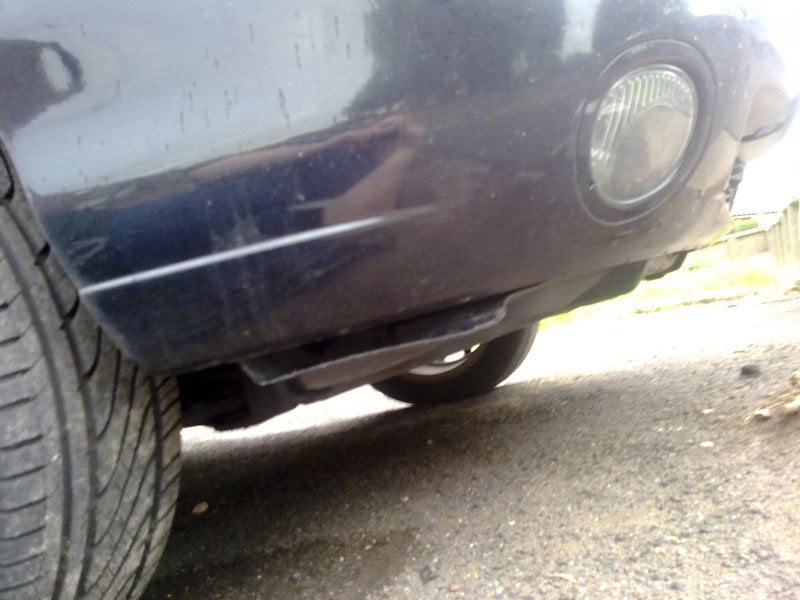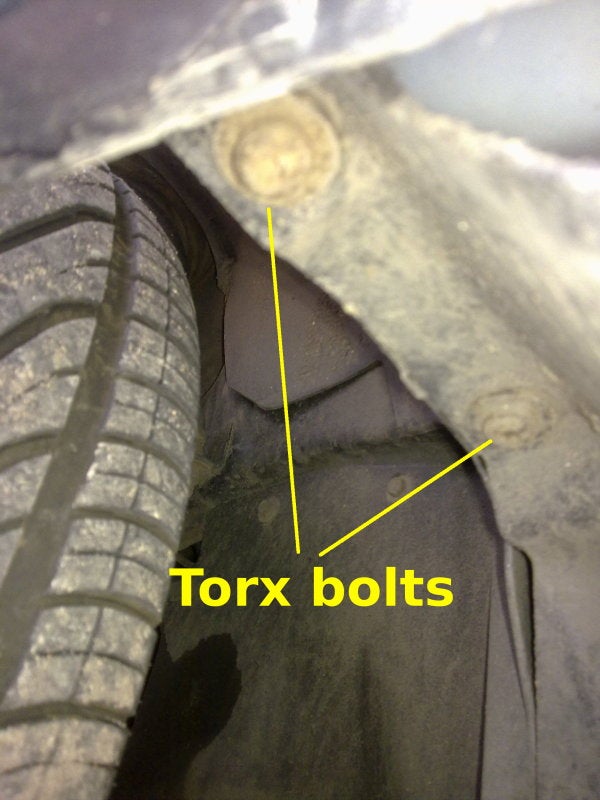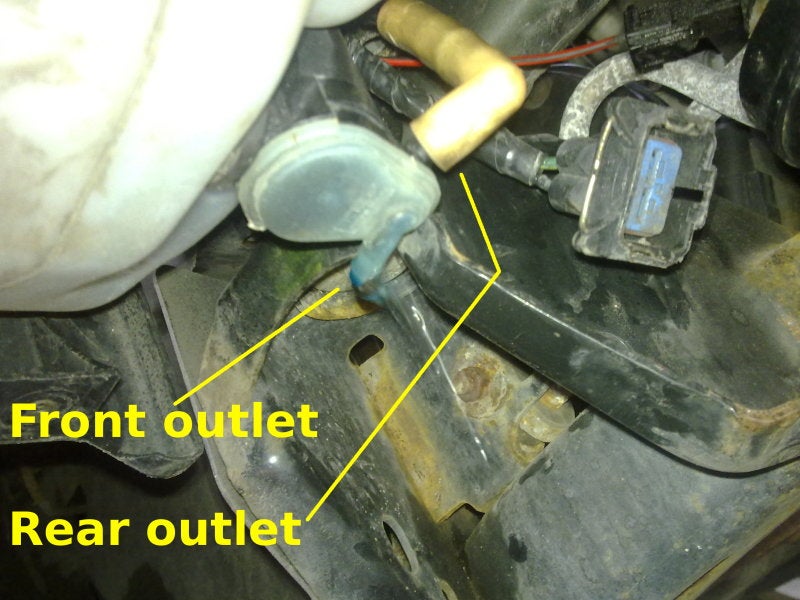Registrations
We now manually approve all new user accounts due to a large influx of spam bots. Accounts are normally approved within 48 hours.
If you need any help with using this Wiki, please ask here: TalkFord.com Wiki Submission Forum
Windscreen Washer Problems
For more information, visit the Ford Mondeo forum on TalkFord.com, the definitive resource site covering all Fords from the present day to the 1970's.
|
Overview Guide | |
| Ford Model: | Mondeo |
|---|---|
| Petrol/Diesel: | ??? |
| Estimated Cost: | ??? |
| Difficulty? | ??? |
| How long does this take? | ??? |
Windscreen Washer Problems
This will likely affect every mk1 and mk2 Mondeo at one time or another. If you have poor fluid output through the washer jets, or none at all, and a puddle underneath the front of the car by the drivers side wheel, the hose will have become fully or party detached from the pump. It's a fiddly job, but not difficult - if you've big hands, you'll need a pair of long-nose pliers to fully connect the pipes again. You'll also need the Torx bits to unbolt the undertray.
Firstly, Lie on the ground next with your head in front of the front drivers-side wheel. At the front of the wheelarch are two Torx bolts securing the undertray to the body. These need removing, and the undertray pushed to one side. Don't bend it too far, or it'll crack...
With that out of the way, you'll see the pump.
There are two outlets - one for the front windscreen, and one for the rear window. On each outlet is a flexible piece of rubber piping with a 90-degree bend pre-formed. At the other end of this flexible piping, there should be a rigid plastic hose fully inserted. When the pipes are frozen, but the pump is trying to push fluid out, it ends up pushing the rigid section out of the flexible section. If fully pushed out, you'll get nothing from the jets. If slightly pushed out, you'll have a reduced flow from the jets, and soapy water landing on the undertray, sliding off when the vehicle moves.
I found it easiest to remove the flexible pipe from the pump. Be prepared for gravity to help the water trickle out - in my opinion it's best to allow the tank to empty rather then try fumbling around with water trickling down your arms. With the flexible section to one side, slide your hand up alongside the pump, and feel for the rigid hose. Once you have it, use your long-nose pliers - or beautiful and feminine lady-hands - to hold the rigid pipe in place. Slide the flexible section firmly back onto it. Keeping the long-nose pliers on the rigid section, gently use downward force to enable the flexible section to mate with the pump, as pulling on the flexible section alone may disturb the seal between the two hoses, making the whole effort pointless.
I'm going to go against the grain here, rightly or wrongly, but with good intentions. I'd only offer advice if I were happy doing it on my own car - and I wasn't. It is commonly advised to use a cable-tie to secure the rigid and flexible sections of piping, helping prevent future occurrence of this fault. Having seen the washer reservoir, and the location of the pump, if it fails then it's not going to come out without removing the bumper and dropping the washer reservoir. Because of this, I'd sooner have the hose blow off than be more securely fitted and end up burning out the pump - but that's just me. It may blow off the flexible hosing from the pump instead, but given how many blow the other end off, I'm not confident that the seal between the flexible piping and the pump outlet is sufficiently slippery to be sure of this, so I'll be keeping mine without the cable ties - personally. I've not heard of a pump burning out after the use of cable ties, so there may be absolutely no problem is using them.
Links to bigger images(2592x1944):-
Submitted be Rich. Captain of the useless.
There is an easier way...
Instead of using the proper ford rubber elbow that connects the pipe to the pump, use a section of rubber hose to join the pipe and the pump. For this, you will need around 8 to 10 inches of rubber or silicone hose. Very cheap or free form the scrapyard.
To do this, lift the bonnet, pull the two black plastic pipes out, connect the ends to the new rubber pipe and feed it back down trough the hole next to the filler. It can be quite tricky to feed it back down through the proper side (right), but you should have enough rubber pipe to feed it down through the other side (left). Once you have it fed through and can feel it from the bottom, just push them onto the ends of the water pump.
It would be a good idea to do this at one pipe at a time just so you know which pipe goes where or they may end up back to front to the front and fear windows. It may also be a good idea to put a little superglue or a small cable tie on the pump and joints in the pipe, as above, there very easily pushed off when you have a blocked or frozen jet.
--Kyle millican 13:14, 10 December 2010 (UTC)
Finis for L-Shaped "VALVE ASSY" 93BG 17A61
David McMahon



 Your Privacy Choices
Your Privacy Choices